Surprising fact: most parks charge about $30 for a seven-day pass, yet an $80 annual pass gives access to all sites for a full year — a huge value if you plan multiple trips.
I write from years on the road, weighing scenery, access, seasonal timing, and crowd flow so you can plan a memorable trip. I name parks and clusters by what moved me, not by a strict ranking, and I tell you how I balance time and logistics.
I also cover practical choices: when the annual pass pays off, how dog rules shape my stops, and why I start hikes before 8 a.m. to dodge crowds in summer.
I follow Leave No Trace and urge you to check permits, shuttles, and alerts before you go. Expect quick picks, deep dives, road-trip routes, and seasonal tips that reflect real trips and real planning.
Key Takeaways
- Compare fees: an $80 annual pass often beats multiple $30 seven-day passes.
- Start hikes early and choose weekdays to avoid crowds.
- Dogs are limited; plan lodging and stops around vehicle-access areas.
- Follow Leave No Trace to protect wild places for everyone.
- Check permits, shuttles, and alerts before you go; build time buffers for weather and road work.
Why I made this list and how I chose these favorite national parks
I chose these spots after hands-on trips, tips from other travelers, and time spent hunting quieter views off main routes. This is my list of favorite national parks based on real hikes, scenic drives, and campfire conversations with people who know these places well.
Selection priorities:
- I favored parks that deliver standout scenery and smart logistics so you get more with less hassle.
- I weigh seasonal shifts—snow, heat, road closures, and wildflowers—because timing shapes the trip.
- I note when staying inside a park (lodges or campgrounds) earns sunrise access and cuts driving time.
I also flag parks that require permits or timed entries so you don’t miss out due to logistics. Plan lodging and tricky trailhead access 6–12 months ahead when demand is high.
“A good season and a short drive can turn a familiar national park into a near-solitude experience.”
Think of this as a field-tested starting point you can adapt to your own places and priorities.
Quick picks: Iconic national parks you can’t miss
![]()
If you have limited days, these four places give the most dramatic returns.
I spotlight four icons where first-time visitors get maximum payoff: Grand Canyon, Yosemite, Yellowstone, and Glacier. Each offers a clear highlight and a reliable window for better light and fewer crowds.
- Grand Canyon: Pair the Trail of Time with Desert View Drive for varied overlooks and lighter foot traffic in spring and fall.
- Yosemite: Granite walls and valley waterfalls shift with seasons; expect peak drama at waterfall peaks and autumn light.
- Yellowstone: The first national park with roughly 500 active geysers—shoulder seasons let you see Old Faithful and Mammoth Hot Springs with fewer people.
- Glacier: Going-to-the-Sun Road opens alpine vistas; try the Highline or Grinnell hikes for classic glacier views.
“Book lodging inside gates when you can—sunrise and sunset magic often reward the early riser.”
| Park | Quick highlight | Best time window | Sunrise / Sunset spot |
|---|---|---|---|
| Grand Canyon National | Trail of Time + Desert View Drive | Spring / Fall | Desert View sunrise |
| Yosemite National Park | Granite domes & waterfalls | Late spring / Fall | Glacier Point at sunset |
| Yellowstone National Park | Geyser basins & springs | Shoulder seasons | Artist Point sunrise |
| Glacier National Park | Going-to-the-Sun Road, Highline | Summer shoulder windows | Logan Pass at dawn |
Grand Canyon National Park: Timeless views, fewer crowds on the North Rim
A rimside day at the Grand Canyon feels timeless, and choosing the quieter North Rim can change the whole rhythm of a trip.
When to go: Aim for spring or fall for cooler temps and easier hiking. The North Rim opens roughly mid‑May through mid‑October, so plan around that window.
Don’t miss the geology-rich strolls and scenic drives
The Trail of Time on the South Rim is an interpretive, view‑rich walk that makes geology readable at a relaxed pace. Desert View Drive spreads viewpoints along a flexible road, so you can escape crowded overlooks and chase light.
- I prefer the North Rim when it’s open—fewer people and quieter trails.
- Sunrise at Mather or Yavapai, mid‑day on the Trail of Time, afternoon along Desert View Drive, sunset at Lipan or Navajo Point.
- Bring water, sun protection, and start early to beat parking crunches.
“Check rim road and facility openings before you go—dates differ rim to rim and can change each season.”
Tip: Booking rim lodging months ahead turns a hectic day into a relaxed, view‑first experience and makes a one‑day run feel like a proper trip.
Yosemite National Park: Granite cathedrals, waterfalls, and four-season magic
![]()
Yosemite’s granite walls and thunderous falls have a way of feeling new each time I return. In spring, waterfalls roar and valley light feels electric. Summer brings long days and big crowds, so I build early starts into every plan.
Come fall and the valley cools; colors and quieter trails make short trips feel rich. In winter, snow hushes the meadows and turns familiar views into something calm and spare.
I watch reservation windows and timed entry closely. Parking fills fast on summer weekends, so I aim for mornings or shoulder-season visits when lines are thinner.
- I steer first-timers to Tunnel View, the Valley loop, Mist Trail sections, and Glacier Point when the road is open.
- I pace hikes by daylight, trail work, and snowpack—shorter daylight in fall or winter means smarter choices.
- When I can, I book in-park lodging to cut commute time for sunrise and sunset light.
“A shoulder-season trip often delivers signature views with fewer lines and the same big scenery.”
Yellowstone National Park: Geysers, prismatic pools, and peak summer crowds
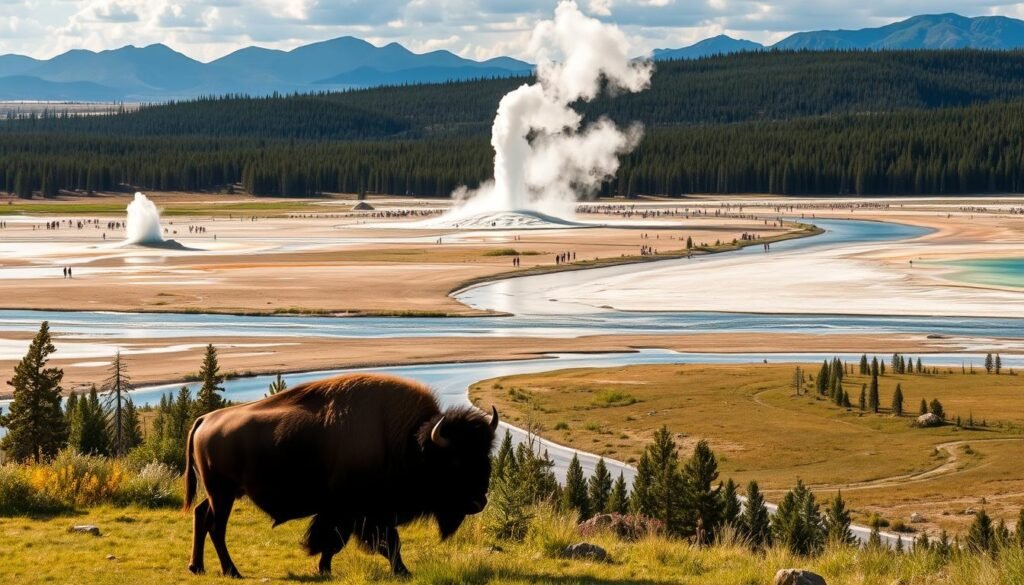
Yellowstone is the world’s first national park and home to roughly 500 active geysers—more than half of the globe’s total. I plan visits here around eruption times, light, and traffic so I get moments of steam without long holds at pullouts.
- Old Faithful: watch a prediction, then walk to Grand Prismatic’s overlook and Fairy Falls for two views of the same basin.
- Mammoth Hot Springs: I reserve a morning to watch steam curl over the terraces before crowds arrive.
- Fairy Falls: a short hike gives a different vantage on color and water that photos often miss.
I favor April–May and September–October for calmer conditions. Shoulder seasons reduce the heavy summer crowds and ease road timing.
I build my itinerary by region so I cut drive time and get more boardwalk and trail hours. Sunrise starts matter at marquee pullouts, and afternoon storms can change plans fast.
Packing and safety: bring layers for wind near water features, sturdy shoes for slick boards, and patience around thermal areas. Stay on paths and heed closures—those rules protect you and fragile ground.
Grand Teton + Glacier combo: Alpine showstoppers in the northern Rockies
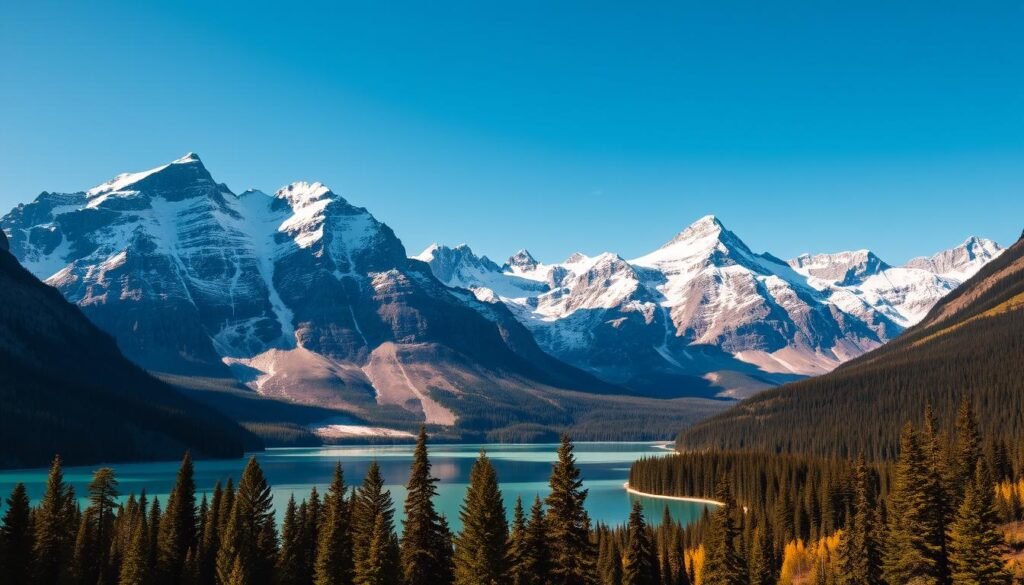
I recommend a northern Rockies loop that pairs classic valley reflections with high alpine drives. The payoff is big views, wildlife moments, and trails that feel wild and close at hand.
Scenic Loop, Mormon Row, Oxbow Bend
Grand Teton’s 42-mile Scenic Loop offers iconic viewpoints like Mormon Row and Oxbow Bend. I aim for sunrise at those spots for mirror reflections and quiet wildlife viewing.
Glacier highlights:
Going-to-the-Sun Road, Highline, Grinnell Glacier
Going-to-the-Sun Road is a renowned alpine drive that opens the high country when snowmelt allows. On foot, the Highline and Grinnell Glacier trails give instant alpine immersion once trails are fully open.
Trip tip:
Two-week road trip loop with Yellowstone
I stitch Yellowstone between Grand Teton and Glacier for a powerful two-week loop. That layout balances geothermal wonders with alpine days and cuts backtrack driving.
- I time departures around road openings and trail snowmelt, and I book lodging windows early.
- I build buffer days for weather, wildfire smoke, and construction zones.
- I practice respectful photo and wildlife etiquette on roadside pullouts—stay off shoulders, keep distance, and avoid crowding animals.
“Plan for flexibility—one closed pass or smoky afternoon can change a whole day, but a buffer makes the trip feel calm.”
Rocky Mountain National Park: High-elevation lakes, wildlife, and fall color
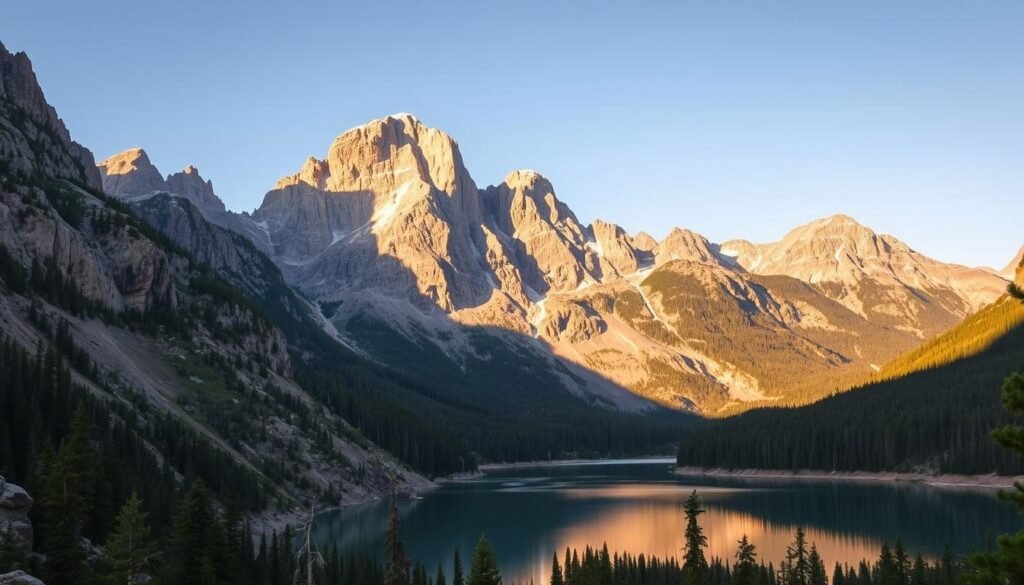
I map a classic day here around light and altitude. Sunrise at Bear Lake, the Emerald Lake hike, then an afternoon cruise along Trail Ridge Road if it’s open—this sequence shows the park’s range in a few focused days.
Trail Ridge Road and the Emerald Lake hike
Trail Ridge Road climbs above 12,000 feet and shifts the landscape fast. The Emerald Lake trail is a short, rewarding hike that lands you at clear alpine water and granite backdrops.
I watch altitude closely. I acclimate with easier walks the first morning, sip water often, and keep my hiking pace steady. That helps with breathing and lets me enjoy sightings like elk bugling and golden aspen stands.
- Early starts: arrive before mid-morning to snag Bear Lake parking and avoid crowds.
- Layers: pack windproof shells—weather flips quickly above treeline.
- Timing: aim midweek or shoulder seasons for calmer loops through popular areas.
“Fall color here can be electric—plan for variable weather and shorter daylight when you map your turnaround times.”
For regional planning and alerts, check park details and closures at Rocky Mountain visitor information.
Zion and Bryce Canyon: Utah national parks that live up to the hype
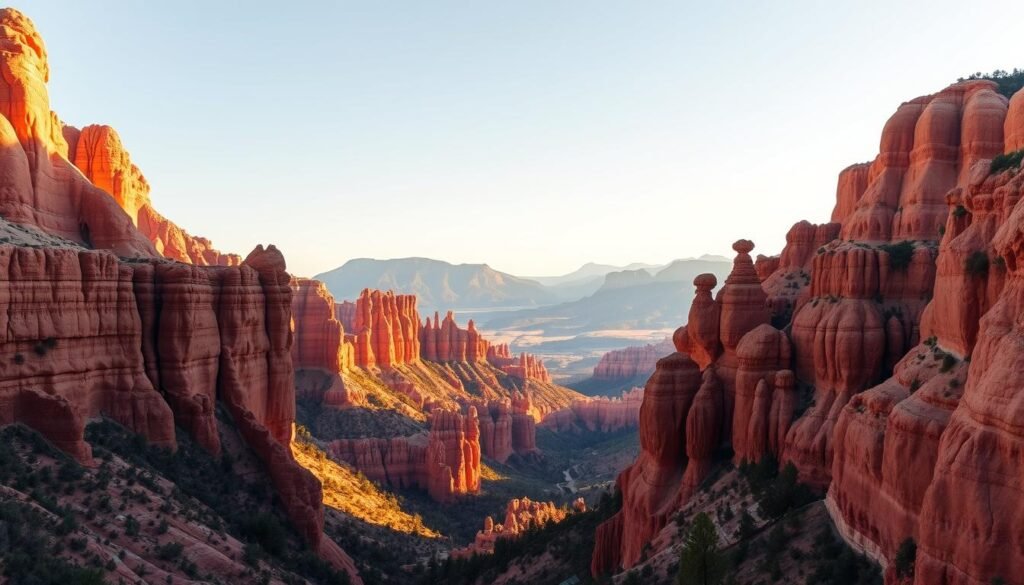
Two neighboring canyon wonders offer very different days and a simple logistics win if you pair them. I often book a short loop that gives a slot-canyon morning in one and hoodoo light the next.
Zion logistics: Book shuttle early, start before 8am
Zion’s shuttle is essential for reaching the main canyon corridor. Book the earliest shuttle window—aim for a 7 a.m. slot when possible. Cooler temperatures and emptier trails make that hour worth it.
I use a two-day rhythm: day one on the shuttle corridor for Observation Point, The Narrows, or Angel’s Landing (permits required), and day two exploring Zion’s quieter side roads and nearby trails.
Highlights at Bryce Canyon
At bryce canyon national I pick sunrise at Sunrise Point, then hike Navajo Loop and the Peek‑a‑Boo Loop for full hoodoo immersion. Those trails are compact, dramatic, and easy to string into a half‑day.
Sunrise here changes everything—light and shadow make the amphitheater glow and crowds are still gathering.
When to go and packing tips
I prefer late spring through early fall for trail access and stable weather. Avoid peak summer if you can; summer brings heavy crowds and hotter daytime temps.
- Hydrate often and carry shade: desert heat builds fast on exposed canyon trails.
- Layer for cool mornings and warmer afternoons.
- If you have time, drive the short road between these parks for a rewarding back‑to‑back canyon contrast.
“An early shuttle window and a sunrise at Bryce turned a busy weekend into two quiet, unforgettable days.”
Capitol Reef and Canyonlands: Underrated red-rock wonders
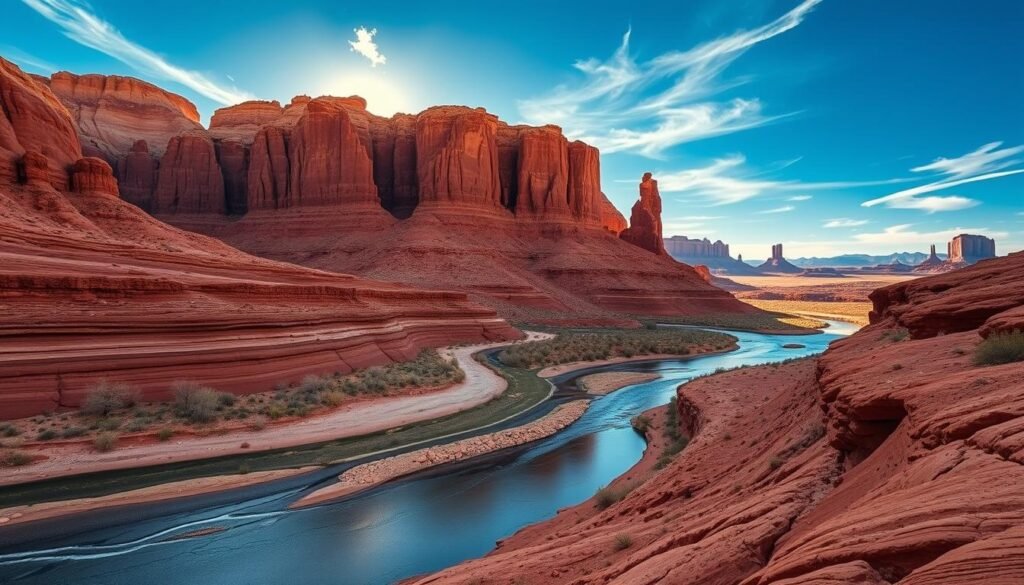
These two parks pair small‑town charm and vast horizons, which makes for a balanced red‑rock loop I often choose.
Capitol Reef surprises me with quiet trails, a historic district orchard, and a beloved general store where pie and ice cream feel like a local right. I start with short scenic drives and easy overlooks to learn the lay of the land before picking a longer hike or an off‑pavement detour.
Canyonlands rewards patient explorers. Its districts spread people out, so rim vistas often feel endless and empty. Pick spots where horizons stack and spend time watching light shift across layers.
- I recommend a 2–3 day loop that blends scenic road time, brief off‑road viewpoints, and short trail bursts.
- Spring and fall give the best hiking temps and steadier weather for long days outdoors.
“A slow road through orchards then vast canyon rims makes the contrast unforgettable.”
For more underrated red‑rock picks see underrated national parks.
Sequoia and Kings Canyon: Giant trees and a canyon drive with serious wow
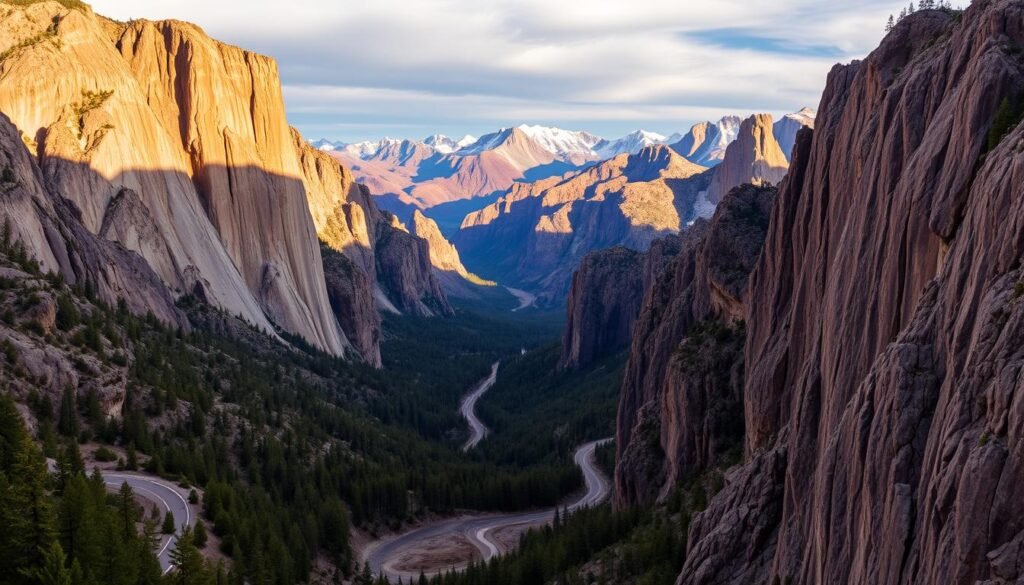
Walk beneath vast trunks and then drive into a canyon that feels carved for drama—Sequoia and Kings Canyon deliver both in one accessible trip. I split my time between grove trails and a scenic descent so each day feels different.
Must-sees and short loops
General Sherman Tree is a must and the Congress Trail pairs well for a full grove experience. I link those on foot, take steady breathers, and keep the pace easy.
Season notes and practical tips
I like summer for long hikes when roads are open. If you can manage snowy approaches, winter brings quiet, snow-draped forest scenes that feel almost private.
- I compare walking among giants with the jaw-dropping canyon descent—both reward different senses.
- Drive Kings Canyon slowly for pullouts and layered viewpoints; give it extra time if you love road-based scenery.
- Layer clothing, carry traction aids in winter, and aim for early parking at marquee trailheads.
“Devote extra time to the canyon drive if varied viewpoints and short hikes are your thing.”
| Feature | Highlight | Best season |
|---|---|---|
| Sequoia grove | General Sherman + Congress Trail | Summer for hikes |
| Kings Canyon drive | Scenic pullouts & canyon vistas | Summer openings; winter for snow scenes if roads allow |
| Visitor tips | Early parking, layers, traction aids | Year-round planning |
Haleakala National Park: Sunrise above the clouds and lush waterfall days
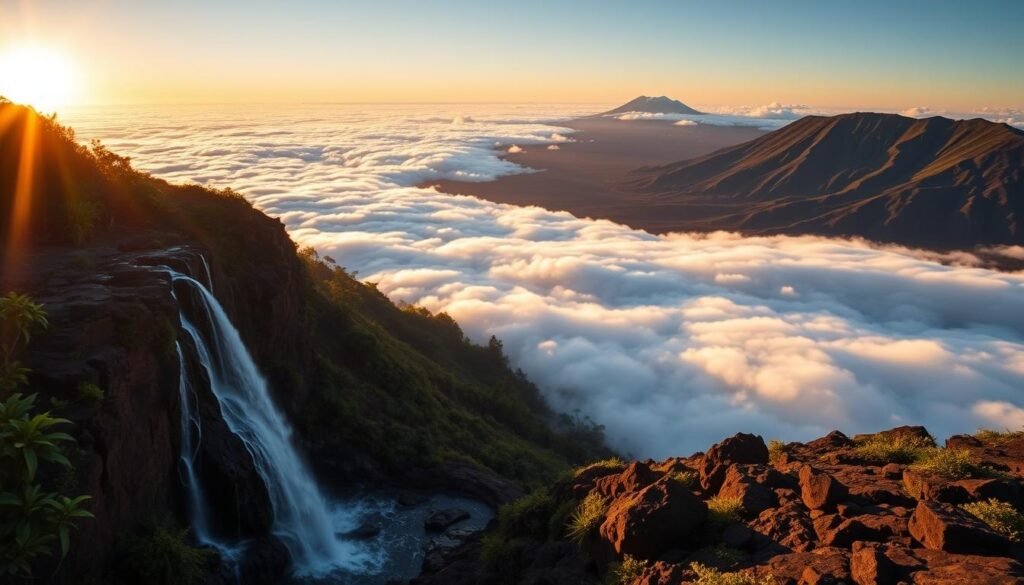
The summit morning at Haleakala is a small miracle. I stand above a cloud sea at 10,023 feet and the light rewrites the horizon. Summit sunrise requires a permit and planning, but that early slot makes the whole trip calmer.
Permits and timing for summit sunrise
Reserve a sunrise permit well ahead. I aim for the earliest slot to beat caravans and wind. Drive time is long; plan lights, warm layers, and cautious driving in dark hours.
Top hikes: crater routes and Waimoku Falls
I split a perfect day into crater hikes above and a lush trek downcountry. Waimoku Falls is about 400 feet of roaring water and tropical trail reward after the high‑altitude morning.
Why I pick winter
I prefer winter (Dec–Feb). Trails see fewer people and temps feel mild on the lower water‑trail sections. Bring a heavy coat for sunrise—high altitude bites even on warm islands.
“Above the clouds at 10,023 feet, you feel both small and wildly awake.”
| Item | Detail | Why it matters |
|---|---|---|
| Sunrise permit | Required for summit | Limits crowds, secures parking |
| Crater hikes | High‑altitude trails | Unique light and geology |
| Waimoku Falls | 400‑foot waterfall | Lush contrast after summit |
Olympic National Park: Rain forest, rugged coast, and mountain ridgelines
Olympic folds glacier‑carved peaks, a rare temperate rain forest, and wild coastline into a compact trip I can do over a long weekend.
I love how one visit hits three distinct zones: Hurricane Ridge for high ridgelines, the Hoh Rain Forest for moss‑draped trails, and a coastal stop for tidepools and sea stacks.
Plan a simple three-part loop: sunrise at Lake Crescent, a Marymere Falls stroll for water and forest, then an afternoon beach walk. Late spring into early summer is ideal when snow melts and trail choices open.
Roads between zones are slow and scenic. Build generous days so you can hike, photograph, and slow down without rushing.
Pack for wet weather and layered changeable conditions—one minute you’re above treeline, the next you’re in dripping old growth.
“You can go from alpine air to ocean spray in a single day—let that pace set your trip.”
| Highlight | Why go | When |
|---|---|---|
| Hurricane Ridge | Alpine ridgelines and views | Late spring–early summer |
| Hoh Rain Forest | Temperate moss and old growth | Late spring–early summer |
| Lake Crescent / Marymere | Sunrise reflections and short waterfall walk | Yearly but best after snowmelt |
Acadia National Park: Coastal classics and a super dog-friendly escape
I love Acadia because it pairs dramatic shoreline views with trails that welcome dogs more than most comparable national park settings.
Base yourself in Bar Harbor for quick food, easy lodging, and fast access to trailheads. I map a tight two-day plan that shows the highlights without rushing.
Day one: drive the Park Loop, stop at rocky overlooks, then take a harbor boat tour for island views. Day two: aim for sunrise or sunset at Cadillac Mountain and pick a few short hikes that match your pace.
Season notes: fall color here steals attention, summer brings crowds, and shoulder seasons offer cooler air and calmer mornings. A scenic flight adds a fresh perspective on jagged coastlines and nearby islands.
“Acadia felt small and wild at once—perfect for a short getaway with a dog and a camera.”
- I recommend Bar Harbor as your base for quick access and dining options.
- Mix driving, a boat tour, and an optional scenic flight for a full sense of place.
- Keep hikes short if you’re traveling with a pet and watch seasonal parking notes.
Death Valley National Park: Dunes, salt flats, and big-sky desert drama
Death Valley unfolds as wide desert theater—salt pans, dunes, and endless sky shape every mile. At roughly 3 million acres it is the largest park in the lower 48 and also the hottest, driest place on earth.
When to go
November through February is my window. Winter brings cool days for hikes and calm road exploring. Summer here is hazardous—skip long outings and long drives then.
Sunrise and sunset rhythm
I aim for Zabriskie Point at sunrise, wander Mesquite Flat Sand Dunes at sunset, and use mid-day for Badwater Basin and Artist’s Drive. That rhythm shows contrast and keeps heat manageable.
Practical notes and tips
- Scale matters: gas and water are scarce—carry extra and plan fills.
- Expect wind and sand. Use sturdy footwear and gaiters for dunes.
- Pack layers for big temperature swings between morning and night.
- Summer hazard awareness: this park can be extreme—avoid heat exposure and tell someone your road plan.
“Give extra time for long drives and sparse services—that buffer makes desert travel calm and safe.”
Coastal California curveball: Redwood, Channel Islands, and Lassen gems
Along California’s coast and high country I find three very different escapes that pair towering trees, island sea trips, and quiet volcano trails.
My short sampler shows how one route can deliver old-growth forest, a boat day, and alpine lakes without rushing.
Redwood highlights
I linger at Stout Grove and Fern Canyon early or late for crowd-free forest time. Those trails feel cathedral quiet, and nearby hidden beaches add a salty edge to forest air.
Channel Islands essentials
Book ferry seats early, pack for wind, and watch for dolphins on the crossing. Day hikes on the islands give epic coastal views and a real sense of offshore solitude.
Lassen Volcanic notes
Lassen rewards sunrise starts. Alpine lakes, steaming hydrothermal features, and uncrowded trails make this park a calm mountain counterpoint.
- How I link them: a flexible 5–7 day road loop that blends coast, a boat day, and mountain time.
- Quick tip: aim mornings for quiet and plan one buffer day for weather or ferry changes.
“Towering redwoods, offshore islands, and volcanic lakes make a compact, surprising California route.”
Big Bend and the Southwest swing: Wild desert, rivers, caves, and sand dunes
A desert loop here rewards patience: long miles, starry nights, and a mix of river canyons, cavern halls, and white gypsum fields.
Big Bend highlights: Chisos Basin, Balanced Rock, Rio Grande overlooks
I spend a morning in the Chisos Basin for broad views, then hike short ridges to Balanced Rock. River overlooks along the Rio Grande give quiet water scenes and dramatic light near sunset.
Carlsbad Caverns: crown-jewel cave touring
Carlsbad’s cave rooms are otherworldly. I take the self-guided route for big formations and a longer ranger tour if I want depth and context.
White Sands and Guadalupe Mountains: dunes and desert peaks
White Sands is perfect for sunset photography and dune play. Guadalupe Mountains adds a summit day and crisp alpine air—both feel like distinct chapters of the same loop.
- Road trip layout: plan multi-day drives and fuel stops; distances are long.
- Timing: I aim for 5–7 days so each park breathes.
- Practical: carry extra water, check fuel, and leave buffer time for slow, scenic driving.
“Drive slow where the views ask for it—those long miles pay back with quiet horizons.”
How I plan my national park trips today: Passes, timing, and Leave No Trace
My planning begins with a simple math problem: pass cost, travel time, and likely crowds. I check fees, entry systems, and shuttle windows before I lock dates.
Annual pass value and 7-day park fees
The annual pass is $80; most places charge about $30 for a seven‑day pass. If I expect two or more park stops in a year, the pass pays for itself fast.
Beat the crowds: weekdays, early starts, shoulder seasons
I use a three‑part anti‑crowd plan: go on weekdays, start hikes before 8 a.m., and pick shoulder seasons for milder light and fewer people.
Leave No Trace and dog rules you need to know
I follow the seven Leave No Trace principles every day I’m hiking. They protect water, wildlife, and trails for everyone.
Dogs: most parks limit dogs to roads and developed areas. That rule saves a turnaround at a trailhead and keeps wildlife safe.
“Plan fees, timing, and rules before you pack—save time and headaches.”
| Item | What I do | Why it matters |
|---|---|---|
| Pass math | Compare $80 annual vs $30 seven‑day | Saves money if visiting multiple parks in a year |
| Anti‑crowd plan | Weekdays, pre‑8am starts, shoulder seasons | More parking, quieter trails, better light |
| Leave No Trace | Seven principles, pack out trash, stay on trails | Protects habitat and trail condition |
| Dog rules & gear | Confirm dog access; pack sun protection, water, layers | Avoids turnarounds and keeps pets safe |
best national parks to visit in the us right now: Seasonal picks and road-trip ideas
I group park choices by season so your trip aligns with road openings and lighter crowds. This short guide matches weather, access, and crowd patterns to help you pick dates with confidence.
Winter selections
Death Valley (Nov–Feb) for warm desert days. I also favor Everglades and Dry Tortugas for mild wetlands and Haleakala for summit sunrise without snow. These choices keep you comfortable and active during winter months.
Spring / Fall picks
For shoulder seasons I steer travelers toward Zion, Bryce, Capitol Reef, and yosemite national. If you want foliage, add Great Smoky Mountains. Utah national parks cluster well for efficient road pairings and timed entries.
Summer alpine options
When heat builds, I head high: glacier national, Grand Teton, Rocky Mountain, and North Cascades open trails after snowmelt. Book lodges and shuttles early for peak-year windows.
“Group by season, plan permits, and add a buffer day for road or weather surprises.”
| Season | Top picks | Timing | Road trip pairing |
|---|---|---|---|
| Winter | Death Valley, Everglades, Dry Tortugas, Haleakala | Nov–Feb | California desert loop or Florida coastal run |
| Spring / Fall | Zion, Bryce, Capitol Reef, Yosemite | March–May / Sept–Nov | Utah cluster; Sierra Nevada route (state linking) |
| Summer | Glacier, Grand Teton, Rocky Mountain, North Cascades | July–Aug (after snowmelt) | Northern Rockies loop, Glacier–Yellowstone run |
Conclusion
Plan early: I book popular lodge nights and permits about 6–12 months ahead so a signature stay doesn’t slip away.
I suggest picking a region—Utah’s five cluster, a Tetons–Yellowstone–Glacier loop, or a Southern California mix like Sequoia, Kings Canyon, Channel Islands, and Death Valley—and choosing 2–3 anchor national parks for your core days.
Build rest days for spontaneity and follow Leave No Trace. Check alerts for road work, shuttle changes, and permit windows before you book flights.
Keep a running list of places that moved you so future trips have clear goals. I’d love to hear what surprised you most and which park you can’t wait to see next.


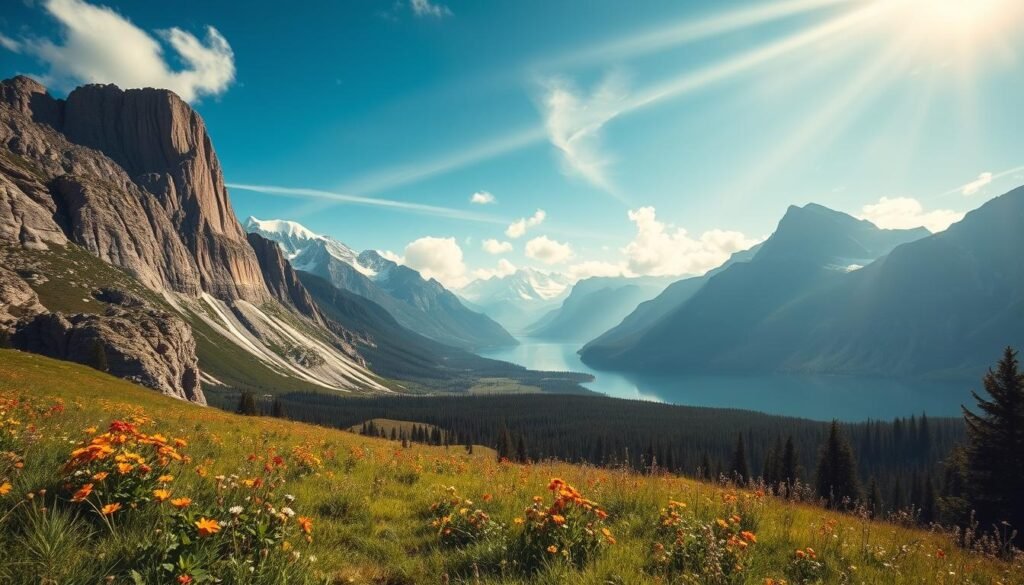



















One Response